
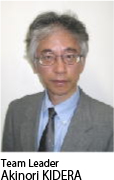
Molecular simulations try to elucidate the molecular basis of biological functions brought about by proteins and other biomolecules at the atomic level. Hierarchical nature of biological functions can be modeled by the multi-scale simulation combining quantum chemical (QM), molecular dynamics (MM), and coarse-grained model (CG) simulations, i.e., QM/MM and MM/CG. Developing these methods, we try to simulate large-scale systems containing long-time dynamics with high-precision. Our scope covers a wide-range of biological problems, from enzymatic reaction to molecular events in the cellular environment. These techniques should form a fundamental basis for rational drug design.
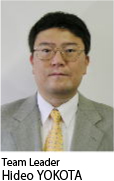
We are developing the integrated cell simulation platform which is important system of cell scale research. This platform is a common base system which takes into consideration of an intracellular place and the coupled simulation.
In the space of a fixed lattice, the model parameter obtained from experiment data can simulate various cell reactions on our platform. We section a cell in 1,000,000 voxel and take the information such as the quantity or movement of material. Then we simulate a phenomenon in the cell to various cell reactions.
Our first target is hepatocyte. We reproduce the energy metabolism or the drug metabolism based on the experimental data. We hope for the achievement of biology and the medical significant simulation. It is thought that it becomes a useful tool to understand the disease and the clinical condition.
In the space of a fixed lattice, the model parameter obtained from experiment data can simulate various cell reactions on our platform. We section a cell in 1,000,000 voxel and take the information such as the quantity or movement of material. Then we simulate a phenomenon in the cell to various cell reactions.
Our first target is hepatocyte. We reproduce the energy metabolism or the drug metabolism based on the experimental data. We hope for the achievement of biology and the medical significant simulation. It is thought that it becomes a useful tool to understand the disease and the clinical condition.
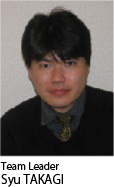
We are developing a living human body model which has the circulation system, the musculoskeletal system, all sorts of organs and the nervous system. Using this model, we are trying to develop the simulation-based supporting system for the next-generation medical treatment.
For example, as one of the blood flow simulators, thrombosis simulator is developed through the introduction of the coupling method between continuum scale simulation for blood flow and cell level simulation for the aggregation of platelets. This simulator will be used for the prediction and treatment of the thrombotic disease.
For example, as one of the blood flow simulators, thrombosis simulator is developed through the introduction of the coupling method between continuum scale simulation for blood flow and cell level simulation for the aggregation of platelets. This simulator will be used for the prediction and treatment of the thrombotic disease.
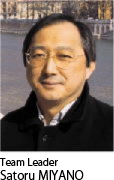
We are facing with the explosion of measurement data related to genes and genomes. This team is developing algorithms and their applications for data analysis which cannot be realized without peta-scale computing. In parallel with this data analysis challenge, we are creating a peta-scale modeling technology based on data assimilation that fuses observational data and simulation models. In the future, these developments will form the fundamental information technology that will contribute to drug target discovery and medicine with the full scope of all human genes and their variations. Currently, by sharing "lung cancer and drugs" as a common theme in the team, the members are making a strong synergy to establish the technology that can predict large biological network structures and their dynamic models from data and will produce personalized models from "general models" with "personal data" with the innovation of data assimilation.
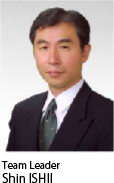
The brain is a profound biological system where information infrastructure, called intelligence has been constructed on the basis of physical molecules. We perform simulation studies of development and plasticity of single neurons,dynamics of cortical neuron ensembles, and processing of invertebrate's olfactory system and mammalian visual system; they will lead not only to elucidating information processing functions of brain and neural systems but also to understanding how development/learning disorders arise in the brain.
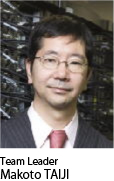
The developments of highly-parallel software is essential to enhance the potential of the nexet-generation supercomputer system. We contend with the difficult problems in massive parallelization with the other research teams. Also, we develop the parallelized libraries for the basic simulation software such as molecular dynamics, molecular orbital methods and fluid/elastec mechanics, as well as visuzlization and work-flow tools.